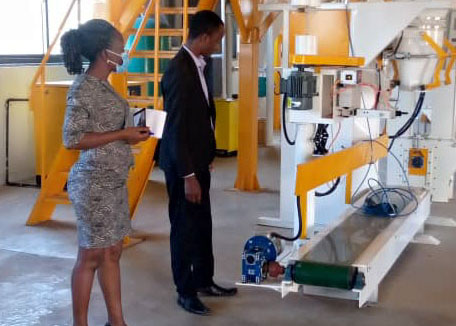Agro-Industrialization
Agro-Industrialization-aims to increase commercialization and competitiveness of agriculture production and agro processing
Agro-Industrialisation is one of the 20 programmes of the NDPIII and it operationalises objective one of – Enhancing value addition in key growth opportunities. The programme seeks to address key challenges in agricultural production, agro-processing and value addition
The programme seeks to address key challenges which include:
- Low agricultural production and productivity.
- Poor storage infrastructure and post-harvest management.
- Low value addition.
- Poor market access and low competitiveness of Agro-based products in domestic, regional, continental and international markets.
- limited access to agricultural financial services and critical inputs.
- Poor coordination and inefficient institutions for planning and implementation of Agro-industrialisation .
Therefore, the objectives of the programme were to:
- Increase agricultural production and productivity.
- Improve post-harvest handling and storage.
- Improve agro-processing and value addition.
- Increase market access and competitiveness of agricultural products in domestic and international markets.
- Increase the mobilisation and equitable access and utilisation of agricultural finance.
- Strengthen the institutional coordination for improved service delivery.
THE AGRO-INDUSTRIALISATION PROGRAM IN BUSIA MINICIPALITY

Introduction
The program entails increasing value on agricultural products through production and marketing. The key players include; Animal husbandry, crop production and fisheries. The program has several pillars in the activities include; increased production and productivity through support to farmers and other value chain actors by carrying out trainings in agricultural production and value addition. The activities include; on-farm visits, farmer trainings, farmer to farmer exchange visits etc. The support of the parish development model program will be fostered through collaboration and Public Private Partnerships. This enables achievement of the desired goals and poverty alleviation.
Increasing farmer access to finances a which is apparently done through the parish development model. Improving food safety and bio security is of vital importance to the public health. This is ensured through regular inspection of meat, fish, foods to ensure compliance to standards by the sanitary and Phyto-sanitary protocols. The control of spread of zoonotic diseases is the key mandate of the veterinary sector. Animal Disease control through prevention and control by vaccination of animals against zoonotic and notifiable diseases is done and emphasized to curb the transmission cycle from animals to humans. The control of disease in dogs is very vital in the above solution.
The major production lines include; food and feed processing, fish ice production, tannery production, coffee processing, cassava milling, millet sales, bulking and storage. This is done by primary, secondary and tertiary processing of agricultural commodities for local consumption and export. The increase in farmer support through extension services has enabled more production and improved yields to the farmers.

Value Addition
The key element of value addition is agro industrialisation which enables primary, secondary and tertiary processing of agricultural produce. This is done through milling, improved packaging, semi-processing and bulking which enables increased market pricing and enables cross border trade and selling of products for long because of the reduced water activity and reduced spoiled. The major development policies like BUBU (Buy Uganda Build Uganda) are enhanced and Vision 2040 is uplifted through this approach.
The major actors include; Feed and food mills, coffee hurlers, tanneries all of which process products for export and use in the country. Some of the challenges faced are high costs of production.
We commend the Uganda National Bureau of Standards for supporting these actors such that they uphold the sanitary and Phyto -sanitary procedures in the country so as to serve the global markets and the ordinary Mwana inchi (natives)
Many actors have come on boards to support the traders and actors in the agriculture value chain, Busia MC provides the necessary mechanisms for fostering trade through issuing trade licenses and the new program called IRUS to enable easy collection of revenue from the actors.
The farmer access to credit has been enhanced through the Parish Development Model. The farmers have access to agricultural loans to support their enterprises through PDM for their benefit and transformation to the money economy.
Under PDM, the households were profiled and continuous registration of beneficiaries and their enterprise groups has been done and is still ongoing. The registered groups are added on to the PDM FIS for easy access to funding. With this loan under parish development model revolving fund.
Compiled by;
Dr. Sserunkuuma Joachim
Head Of Production Department and Agro-Industrialisation Program,
Busia Municipal Council
Busia Main Market
Busia High Value Addition Facility in Busia.

Busia Municipality is a local government in Busia District, Eastern Uganda, at the border of Kenya.
GET IN TOUCH
P.O.Box 177, Busia-Uganda
Hadongole Road
Phone: +256 774 096 267



